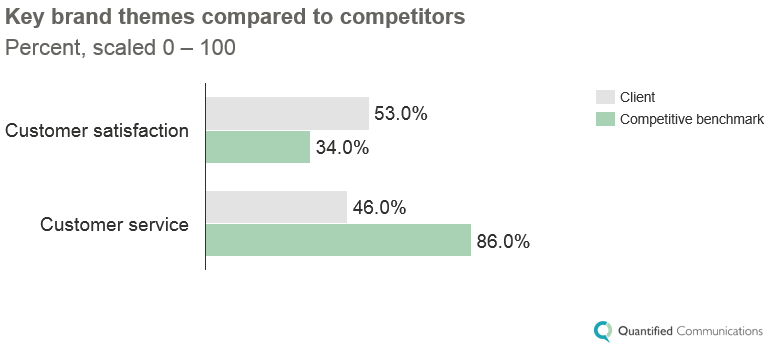Measuring brand positioning through analytics

Regardless of the driving force behind a branding initiative—from clarifying brand positioning, making your brand more distinct, appealing to a new target audience or making your brand story more relevant—brand refreshes are major initiatives.
Not only do these initiatives require large investment of time and resources, but results may be less impactful than hoped. As Margaret Molloy, Global CMO at strategic branding firm Siegel+Gale, puts it:
Developing a successful brand requires a healthy balance of art and science. Creativity is essential to setting a brand apart from competitors, but a fact-based, data-driven approach is necessary to establish a solid foundation.
Companies rely heavily on their agency, stakeholder surveys and focus groups for feedback, but it is difficult to get prescriptive and objective recommendations from these efforts.
Eliminate the subjective guesswork to deliver more distinct messaging
In a competitive marketplace, every communication touch point can impact a customer’s satisfaction and likelihood to recommend or a prospective customer’s purchase decision (NPS).
To complement primary research tactics, brands can now implement new data-driven communications feedback offerings. By applying communication analytics that predict how audiences will respond to your written and spoken communications, marketing and communications professionals can identify any gaps between the brand attributes the company thought it was articulating and what it was actually communicating. For example, a company may learn that it is not communicating its desired brand message of being a “low-cost solution” consistently or clearly.
These powerful analytics also allow for brands to quickly and effectively identify how well it is communicating points of brand distinction compared to its primary competitors. For example, in one client engagement, we discovered a brand was communicating more distinctly about customer satisfaction than its competitors, but competitors articulated customer service more effectively.
Once a company has identified development opportunities, they can leverage these analytics for actionable insights to refine brand positioning and messaging. Armed with objective data, brands are empowered to craft distinctive brand strategies more quickly and efficiently, and optimize existing content to better align with their brand voice.
To learn more about how we can help your team use data to inform and improve your branding strategy, contact us at info@quantifiedcommunications.com.
Want to read more on this topic? Best practices for brand messaging during a refresh
